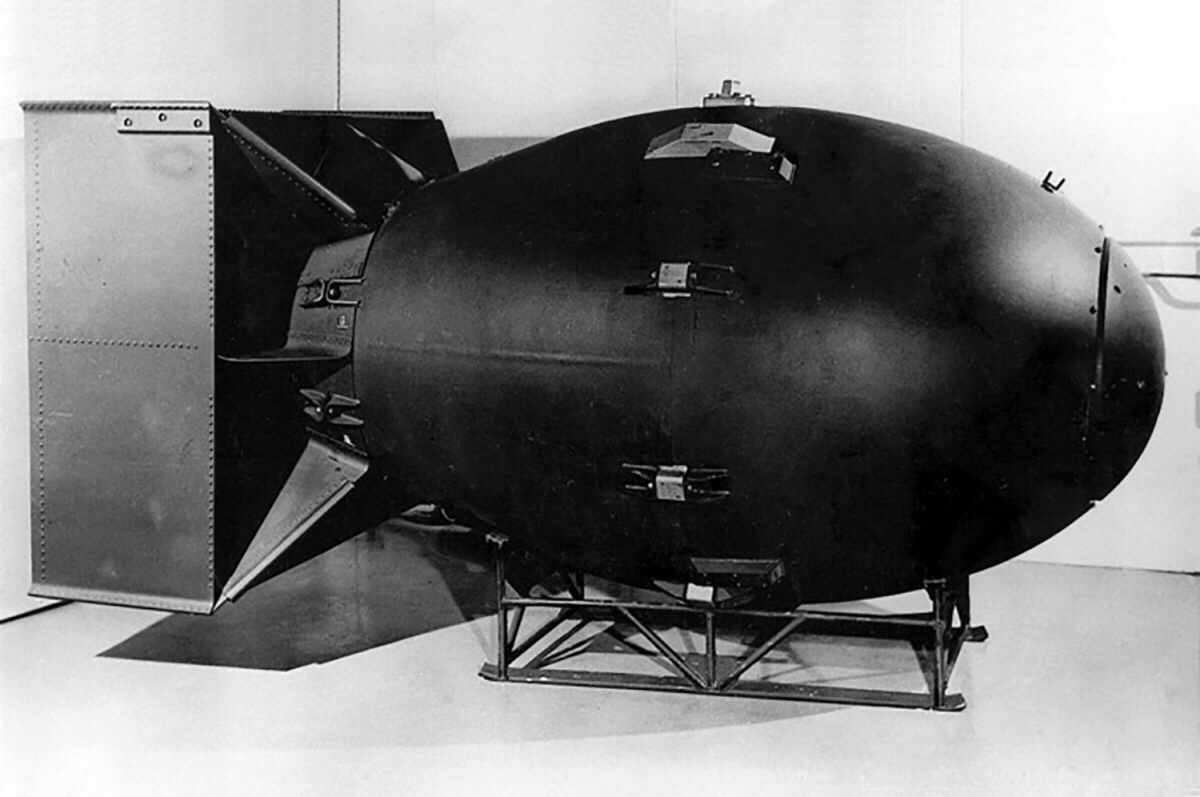
The Story of How France Built Nuclear Weapons
June 23, 2018
Steve Weintz
Once Europe had trembled under the tramp of French boots; twice Paris had fallen to a foe; three times France had succumbed to invasion. Before the World War II France, like Britain and Germany, led the way in nuclear science, building on the Curie family’s work. Frederic Joliot-Curie set up the first cyclotron or particle accelerator in Europe and with Lew Kowarski succeeded in creating a fission reaction in uranium early in 1939, soon after the discovery of the phenomenon.
France’s interest in nuclear science was at first a quest for an energy source more than a weapon—an industrial nation needed fuel to power its armaments factories. Joliot-Curie asked the government for money and certain rare materials: uranium ore and “heavy water.” The ore came quietly from a Belgian mining firm with a mine in the Congo, but the heavy water–water in which ordinary hydrogen atoms are replaced by twice-as-heavy deuterium atoms—came from Norway, a country endangered by Nazi Germany.
No sooner had French agents secured the world’s entire supply of heavy water than France fell in May 1940. The uranium went to Morocco and the heavy water to Britain, which is where it was used in crucial experiments that led to the Manhattan Project. Once in Canada, Joliot-Curie’s colleague Bertrand Goldschmidt developed the chemical process for separating plutonium from uranium fuel. Though the Joliot-Curies remained in France they did not collaborate, and aided the Allied ALSOS mission to locate and secure German nuclear-research materials.
But American suspicions of some French scientists’ Communist beliefs, along with reluctance to share the bomb with any other nation, hampered French postwar nuclear collaboration. Gen. Leslie Groves, head of the Manhattan Project, ordered their conversations tapped in London. After France, at Frederic Joliot-Curie’s urging, established its civil nuclear energy authority in October 1945 General Groves grudgingly allowed Goldschmidt, Kowarski and others to pass on what they knew from their wartime Canadian efforts.
The French nuclear effort proceeded adroitly by small steps despite all this background noise. The fist reactor, ZOE 1 went critical in 1948, a plutonium extraction plant started up in 1949, and within a decade France was producing both kilograms of plutonium and megawatts of electricity every year. By the early 1960s France was self-sufficient in nuclear fuels.
But desire for the Bomb vacillated with French political will and Cold War politics. Widespread support for the French Communist Party and a natural jealousy inflamed Gallic feelings about the “special relationship” between America and Britain. Dien Bien Phu, the catastrophic 1954 defeat of French forces by the Viet Minh in northern Vietnam, spelled the end of France’s colonial empire.
In December 1954 the Cabinet authorized the development of an atomic bomb; but not until France suffered further humiliation would someone seize the weapon. After the Suez Crisis of 1956, in which American pressure on Britain forced its exit from a joint UK-French-Israeli effort to retake the Suez Canal from Egypt, the French drive for the Bomb accelerated. The election of Gen. Charles de Gaulle and the establishment of the Fifth Republic in 1958 added impulse to the drive. “A great State,” he said, “which does not possess them [nuclear weapons], while others have them, does not command its own destiny.”
Like the United States and the UK, France looked overseas for big vacant lands to test its nukes. After briefly looking at sites in the Alps and on Corsica the remote Algerian oasis of Raggane deep in the Sahara Desert was designated the Sahara Center for Military Experiments (Centre Saharien d’Expérimentations Militaires, CSEM). Beginning in 1957 all the infrastructure of the nuclear enterprise appeared in ordered patterns in the desert. No ragged Beau Geste fort, CSEM supported its ten thousand personnel with an airport, barracks, laboratories, shops, communication stations, water and power plants.
The first test, code named Gerboise Blue (“Blue Sand Rat”), like the following two atmospheric tests, was mounted atop a three-hundred-foot-tall steel tower, much like America’s first test Shot Trinity. On February 13, 1960, Gerboise Blue yielded a thumping sixty kilotons from its levitated plutonium core—the largest ever first test and a record that still stands. Shots Gerboise Blanc and Gerboise Rouge didn’t come close to Gerboise Blue’s yield but after one test a patriotic, foolhardy commander led his troops wearing shorts across vitrified sand into ground zero to plant the Tricolour.
No comments:
Post a Comment